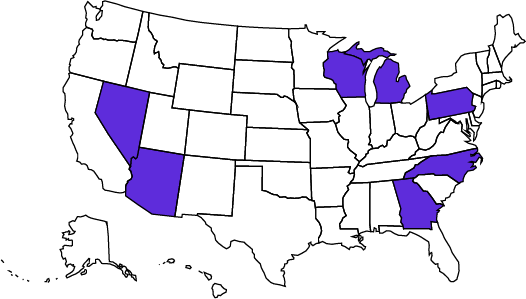Introduction: The Significance of USAID
The United States Agency for International Development (USAID) has played a pivotal role in global development and diplomacy since its establishment in 1961. USAID promotes peace, stability, and progress in various regions worldwide. By supporting initiatives in healthcare, education, agriculture, and more, USAID helps foster economic growth and reduce poverty. Moreover, its efforts contribute to building stronger international relationships. The potential termination of USAID raises serious concerns about the future of global development and diplomacy. Understanding its significance is crucial to assessing the possible consequences of such a decision.
Developmental Impact

Image courtesy: Unsplash
Effects on Global Health Initiatives
Ending USAID could lead to devastating setbacks in global health initiatives. USAID plays a crucial role in combatting infectious diseases worldwide, such as HIV/AIDS, malaria, and tuberculosis. These programs have saved millions of lives by providing essential medicines, funding vaccinations, and training local health workers. Without USAID’s continued support, many developing countries might struggle to sustain these health initiatives, leading to higher infection rates and potentially reversing years of progress.
Global health isn’t only about stopping diseases; it’s also about preventive care and essential health services. USAID has been instrumental in funding maternal and child healthcare programs, significantly reducing mortality rates. Without it, many expectant mothers and infants may face life-threatening conditions without proper access to medical care. Furthermore, USAID’s role in distributing nutritional supplements and addressing chronic health issues like malnutrition might be compromised, affecting the most vulnerable populations worldwide.
Consequences for Education and Infrastructure
USAID’s contributions go beyond health. Ending its operations could severely impact education systems in various countries. USAID has been funding educational projects, building schools, and providing critical resources like books, uniforms, and trained teachers. Without USAID’s support, educational disparities could increase, affecting millions of children who rely on this assistance to pursue their studies.
Furthermore, the termination of USAID could hamper infrastructure development. Roads, bridges, and waterways built with USAID’s collaboration have connected rural regions to markets, enhancing economic growth. If these projects stop midway, they could isolate communities, hinder trade, and stunt economic progress. These incomplete infrastructures could deteriorate swiftly without proper maintenance, compounding economic challenges in affected regions.
Implications for Poverty Reduction Efforts
Poverty reduction has been a cornerstone of USAID’s mission. Several initiatives focusing on economic development, food security, and financial inclusion have helped lift communities out of poverty. The end of USAID could topple these programs, leaving the impoverished more vulnerable.
With the abrupt cessation of aid, job creation projects, especially in agriculture and small businesses, might suffer. Local economies relying on USAID-backed programs might face increased unemployment rates as businesses that depend on USAID funding struggle to survive. Such consequences could reverse significant poverty alleviation efforts, plummeting many communities into destitution.
Moreover, USAID has played a crucial role in empowering women and marginalized groups by supporting their access to resources and opportunities. Without such interventions, gender inequalities in many regions could widen, as women might lose the support they need to gain economic independence.
Economic Repercussions

Image courtesy: Unsplash
Impact on Global Trade
Ending USAID could have far-reaching effects on global trade. Many countries benefiting from USAID also become trading partners with the US, establishing trade channels that benefit both parties. USAID helps create stable and robust markets that import American goods by aiding these countries. Without it, trade relationships could weaken, potentially leading to decreased export opportunities for the US.
Furthermore, market destabilization could occur as these regions lack the resources to develop local industries and consumer bases independently. This instability can disrupt supply chains, affecting global trade routes and the availability of products worldwide. The ripple effect might lead to increased inflation, impacting global economies, including that of the US.
Consequences for American Businesses
American businesses, particularly those with international operations, could feel the sting of halting USAID. Many US companies have thrived by entering emerging markets supported by stable environments fostered by USAID. Terminating USAID could destabilize these regions, making it difficult for American businesses to continue or expand their operations.
Moreover, USAID investments often facilitate private investments by reducing economic and social risks in developing markets. The absence of such development aid could discourage American businesses from investing further, stalling growth and innovation opportunities. Companies in various sectors, from technology to agriculture, could face reduced market access and increased operational risks.
Economic Stability in Developing Nations
Lastly, the economic stability of developing nations could significantly suffer from USAID’s cessation. Many of these countries rely on USAID for direct financial aid and technical assistance, which helps them strengthen governance, improve policy frameworks, and enhance economic management. Losing this support might impair their ability to sustain economic growth independently.
These countries may struggle to fill the funding gaps left by USAID, potentially relying on loans that could increase national debts. This reliance on unsustainable financial solutions could prompt economic instability and make these countries more susceptible to economic crises.
Furthermore, the socio-economic impact could lead to increased migration and an exacerbation of humanitarian crises as people flee poverty-stricken areas. Such crises could strain already fragile systems in neighboring regions and countries, spurring wider global economic and humanitarian repercussions.
The dissolution of USAID’s endeavors provides a cautionary tale of how interconnected the world remains. Ending such aid extends beyond immediate economic and developmental impairments to global stability and prosperity.
Diplomatic and Strategic Consequences
Eliminating USAID could have far-reaching implications beyond the immediate financial savings. Terminating a significant component of America’s foreign assistance would reverberate across diplomatic channels, alliances, and strategic initiatives. Here’s how:
Changes in Global Alliances
Over the years, USAID has played a crucial role in forging and solidifying global alliances. With its diligent support to nations striving for development, USAID has often been the hand that helped stabilize governments and fortify friendships. Ending USAID could thus disrupt these established alliances.
– Loss of Trust: Many nations have come to rely on USAID as a dependable partner in their developmental journey. A withdrawal could foster a sense of betrayal, reducing trust in U.S. commitments.
Shift Towards New Partners: Countries once allied with the US might seek new partnerships. Emerging powers eager to fill the void could seize the opportunity to extend their influence. For instance, nations may pivot towards China or Russia for aid, thereby altering global equilibrium.
Fragile States at Risk: Without USAID’s stabilizing effects, fragile states might descend into chaos. Destabilization often leads to regional insecurity, potentially breeding grounds for terrorism and conflict—threats that ultimately return to haunt U.S. interests.
Effects on US Foreign Policy
A decision to end USAID could profoundly impact U.S. foreign policy and reshape America’s interactions with the rest of the world.
– Diminished Soft Power: USAID has long been an effective tool of soft power, allowing the U.S. to influence countries through development rather than force. Its elimination would significantly reduce America’s ability to project this soft power internationally.
– Diplomatic Isolation: As USAID-driven goodwill evaporates, American diplomats might find it more difficult to advocate for U.S. policies and interests abroad. This isolation could handicap major international negotiations ranging from climate change accords to trade agreements.
– Limited Crisis Response: USAID often provides the first American response to crises, underscoring the nation’s commitment to global stability. Without this rapid response mechanism, the U.S. may struggle to manage international crises effectively.
Shift in Global Leadership Dynamics
The end of USAID might herald a shift in global leadership dynamics. The absence of U.S. aid might allow other global players to assert their influence.
– Rise of Competing Nations: Nations like China have been eagerly expanding their global footprint through initiatives like the Belt and Road. With America stepping back, these countries could amplify their reach and reshape the global order in their favor.
– New Centers of Influence: The termination of USAID could lead to the emergence of new regional leaders. Previously underscored by American aid, certain countries might rise to prominence, influencing regional politics and economies with potentially anti-Western sentiments.
– Redefining Global Norms: With decreased U.S. involvement, international norms around democracy and human rights could shift. Without USAID’s strong advocacy and support, the global community might witness a setback in these areas.
Humanitarian Concerns

Image courtesy: Unsplash
USAID’s contributions to humanitarian efforts are indispensable. Its cessation could lead to severe humanitarian consequences, affecting millions worldwide who depend on its support for survival and dignity.
Impact on Disaster Relief
USAID is pivotal in disaster relief, responding swiftly when calamities strike. The perils of ending this assistance are manifold.
– Increased Vulnerability: Without USAID, countries prone to natural disasters would lack critical support systems, increasing their vulnerability and prolonging recovery times.
– Delayed Response Times: USAID’s readiness to respond to crises is unmatched. Without its rapid deployment capabilities, disaster-struck regions might face delays in receiving essential services and relief.
– Economic Strain: Natural disasters often cripple economies. USAID’s support mitigates these effects by providing not only immediate relief but also resources for rebuilding. Its absence could result in prolonged economic hardships.
Consequences for Refugee Assistance
USAID assists refugees, provides essential relief, and fosters conditions for safe and dignified repatriation. Ending its operations could have dire implications for refugee populations.
– Reduced Humanitarian Aid: Refugees are among the world’s most vulnerable. USAID supplies vital resources, including food, water, and healthcare. Halting aid would exacerbate already dire conditions in refugee camps.
– Increased Migration Pressures: Without sufficient aid, refugees might resort to undertaking dangerous journeys in search of safety. This increased movement can strain regional infrastructures and heighten geopolitical tensions.
– Decline in Educational Opportunities: Many refugee children benefit from educational programs funded by USAID. The loss of these programs could deny a generation the education they need, perpetuating cycles of poverty and instability.
In summary, the consequences of ending USAID are multifaceted, affecting diplomatic relations, strategic interests, and humanitarian needs on a global scale. The decision to end USAID would not only reshape the role of the United States on the world stage but also adversely impact millions of lives around the world who depend on its services for survival and development. As we wrestle with questions of budget and sovereignty, it is imperative to carefully weigh these consequences against the intended savings, lest we step into a future less stable, less safe, and less compassionate.
Conclusion: The Broader Global Impact
Ending USAID would trigger a series of profound global consequences. Economically, developing nations might face setbacks due to diminished support for infrastructure, healthcare, and education. Politically, the vacuum left by USAID’s absence could be filled by other nations, potentially altering geopolitical alliances and spheres of influence.
– Socially, vulnerable populations may struggle without the aid programs they rely on for basic needs.
– Environmentally, fewer resources might be available to address crucial challenges like climate change.
Finally, America’s global image could suffer as it relinquishes a key role in international diplomacy and humanitarian efforts. The ripple effects of terminating USAID would be far-reaching, urging reconsideration of the wide-ranging impacts before making such a consequential decision.



